Special Report
When We Can Travel Again: Most Beautiful Places to Visit in the US
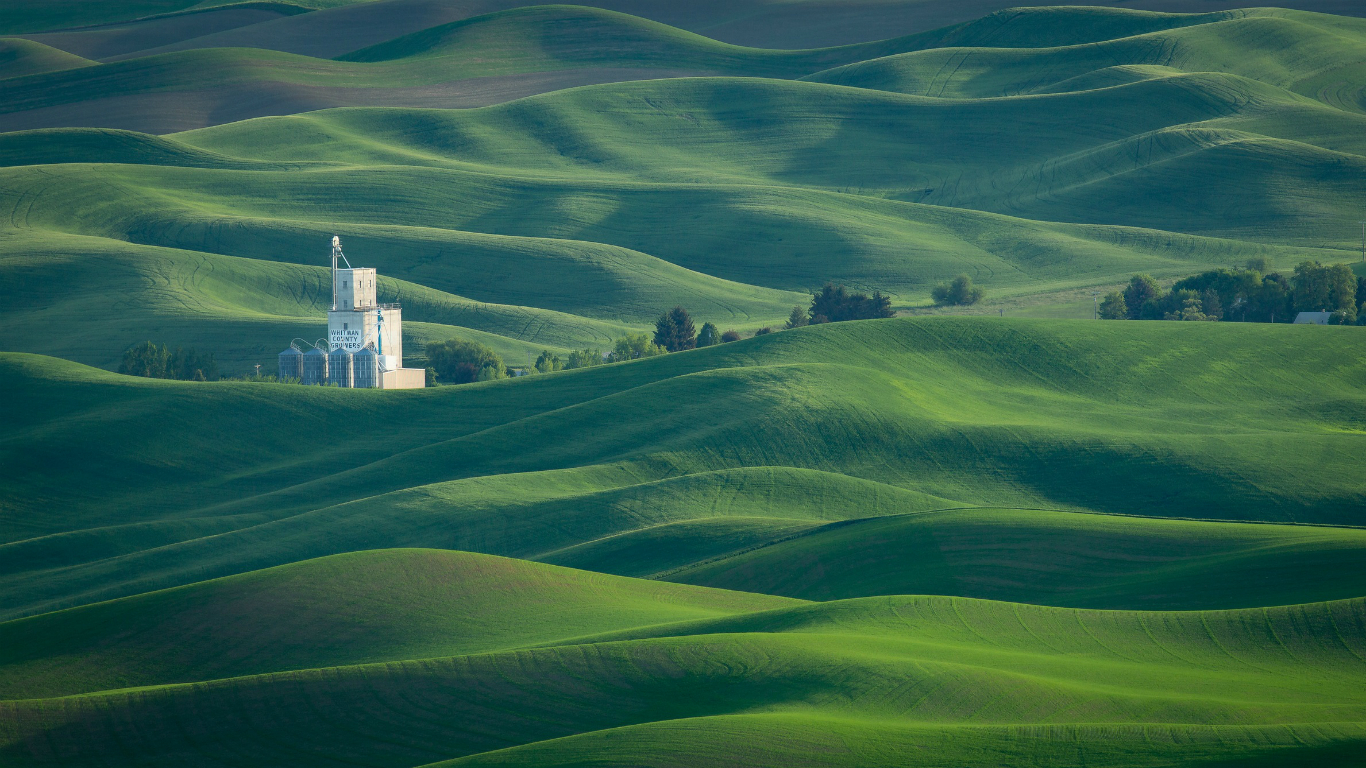
Published:

All states but Hawaii are now designated as COVID-19 hotspots because cases have increased by more than 5% over the past 14 days, and the average positivity rate is either over 10% or growing substantially, according to the Kaiser Family Foundation, a nonprofit organization. The pandemic continues to worsen across the country, and Southern California is in lockdown again. Health experts advise against any form of travel. But with the news of a vaccine to soon be distributed in the U.S., there is hope that people will be able to go back to normal in a few months, and that include traveling.
Mother Nature has many hits. While beauty, they say, is in the eyes of the beholder, certain attractions are indisputably jaw-dropping. They include massive glaciers from the Ice Age, staggering mountains, rock formations from millions of years ago, and other natural wonders.
There are beautiful attractions to be found in places such as Colorado, Washington, Alaska, and many other states. Tourists get to experience spectacular hills, valleys, and thundering waterfalls in parks that attract millions of people every year. In some destinations, visitors outnumber locals.
To compile a list of 27 of the most beautiful attractions in the United States, 24/7 Tempo reviewed dozens of local travel guides about the most popular and most photographed tourist attractions in every state, as well as lesser-known ones.
Click here to see 27 of the most beautiful attractions in the U.S.

1. Mendenhall Ice Caves, Alaska
The Mendenhall Glacier, which originally had two names — Sitaantaagu, or “glacier behind the town,” and Aak’wtaaksit, or “glacier behind the lake” — is 13 miles long, located some 12 miles from Juneau. You can reach the Ice Caves by only two adventurous ways — kayaking or hiking.
[in-text-ad]
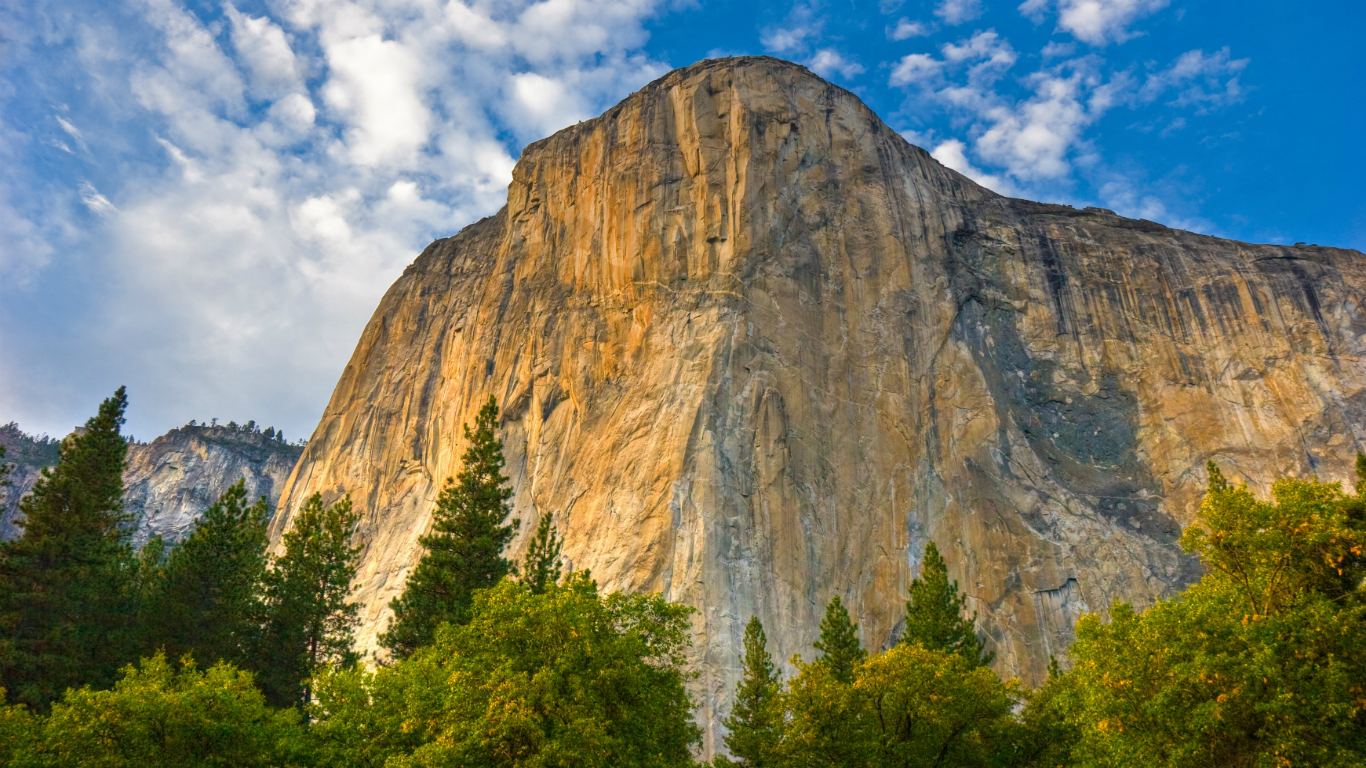
2. El Capitan, California
Standing tall at 3,000 feet, El Capitan is a favorite for visitors, especially photographers. As for rock climbers, it’s the ultimate challenge. If you just want the best views, go to Inspiration Point by foot. El Capitan Meadow offers another opportunity for the perfect picture.

3. Devils Tower, Wyoming
The 5,112-foot monolith is considered sacred by Northern Plains Indians. It is regarded as one of the very best crack climbing areas in North America. However, some routes have been closed since April 1 to protect nesting falcons.

4. Great Sand Dunes, Colorado
The Great Sand Dunes in Colorado are the tallest dunes in North America. They are popular among tourists, especially for sandboarding and sand-sledding. But don’t plan a trip there in the middle of the day in the summer because the sand surface temperature easily gets to 150 F.
[in-text-ad-2]
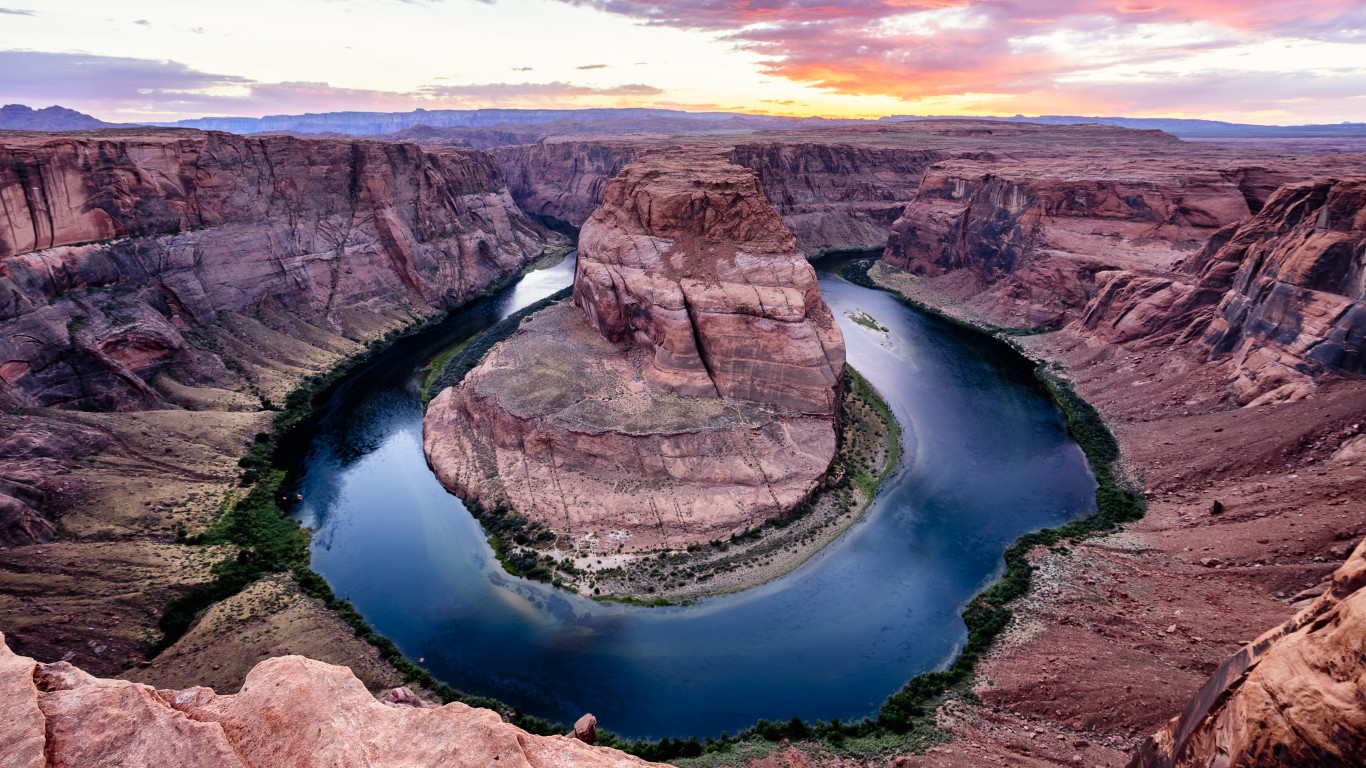
5. Horseshoe Bend, Arizona
The horseshoe-shaped meander of the Colorado River is only about five miles from Page, Arizona. Hiking is a very popular activity. The trail is just 1.3 miles long, but it gets very crowded. It is accessible year-round. It overlooks the Colorado River, and it’s only seven miles north of mile zero of the Grand Canyon.
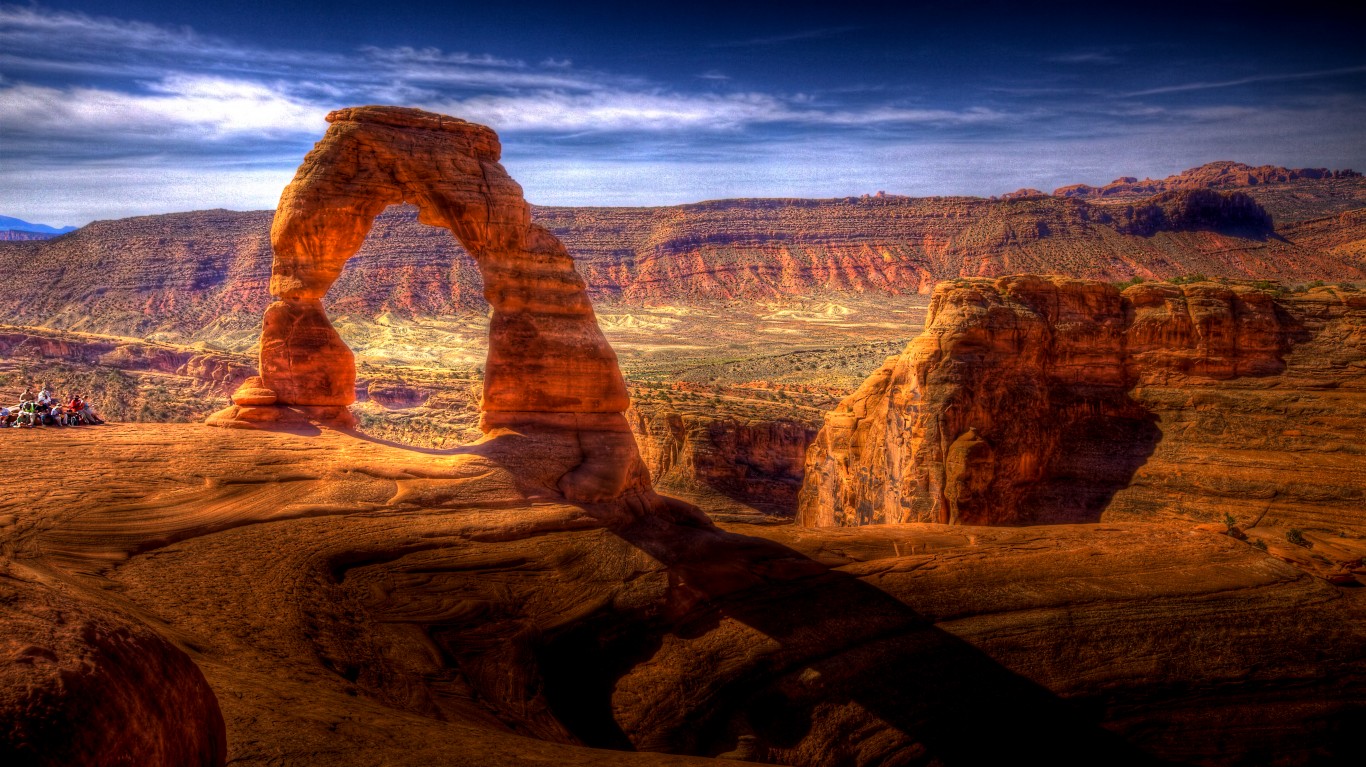
6. Delicate Arch, Utah
Arches National Park has more than 2,000 stone arches but the 65-foot tall Delicate Arch, the largest free-standing in the park, is by far the most famous and popular attraction. The trail to see it is 3 miles round trip and climbs 480 feet.
[in-text-ad]

7. The Palouse, Idaho and Washington
This is a 4,000-square-mile region of natural wonder. How the hills were formed is a bit of a mystery. It was not by rivers and streams. Some experts say the area was the result of prehistoric dust storms and the wind dunes were blown in from the Pasco Basin when the ancient Lake Lewis was drying up.

8. Assateague Island, Maryland
The wild horses that travel the beach near Chincoteague, Virginia and Ocean City, Maryland are by far the biggest attraction on the island. They, as well as the dunes, wetlands and marsh islands, which are also home to more than 320 bird species, are protected by the National Park Service and Fish & Wildlife Service.
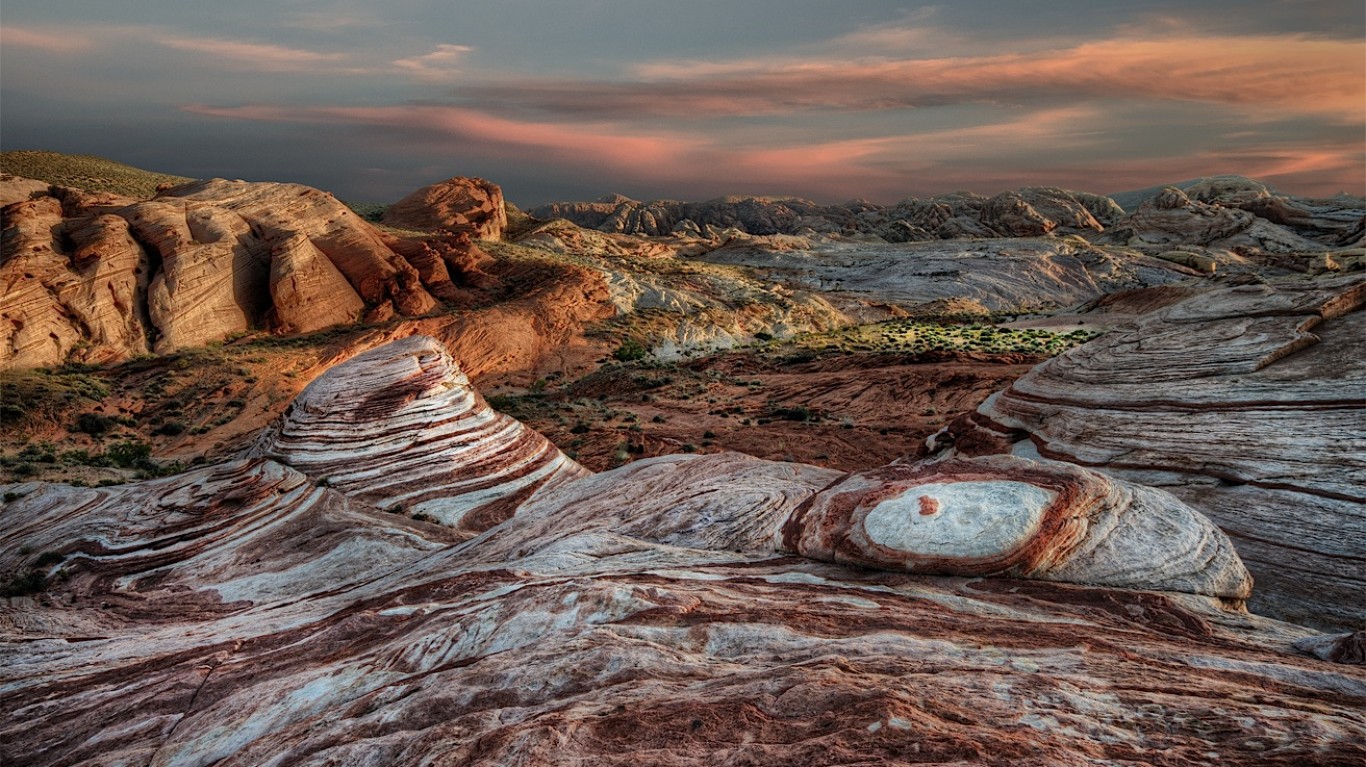
9. Valley of Fire State Park, Nevada
Just one look at the 40,000 acres of red Aztec sandstone outcrops and you’ll understand why it’s called the Valley of Fire. The petrified trees and petroglyphs are more than 2,000 years old. The park is open every day of the year.
[in-text-ad-2]
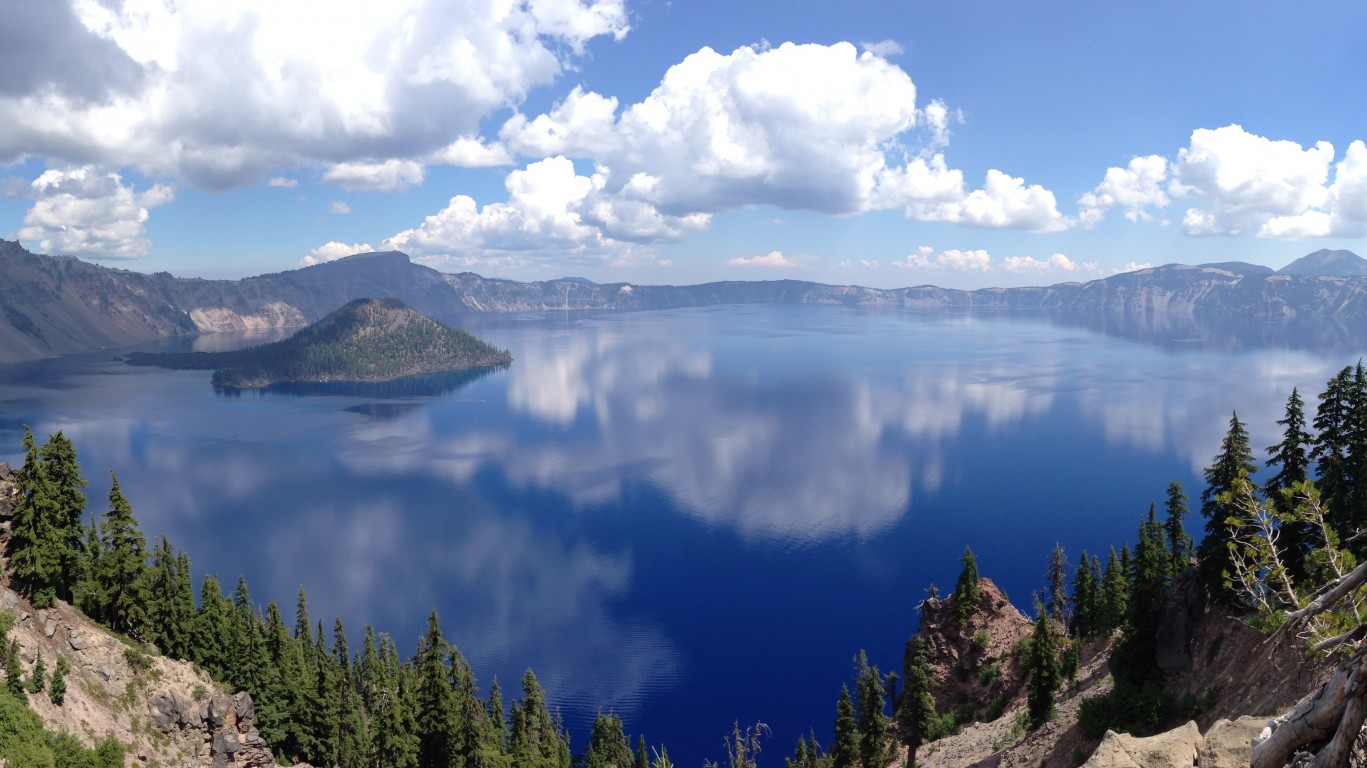
10. Crater Lake, Oregon
It formed around 7,700 years ago, after a powerful volcanic eruption caused a tall peak to collapse and formed a deep basin. At 1,949 feet, Crater Lake is the deepest lake in the United States. There are no streams or rivers flowing into or out of the lake.
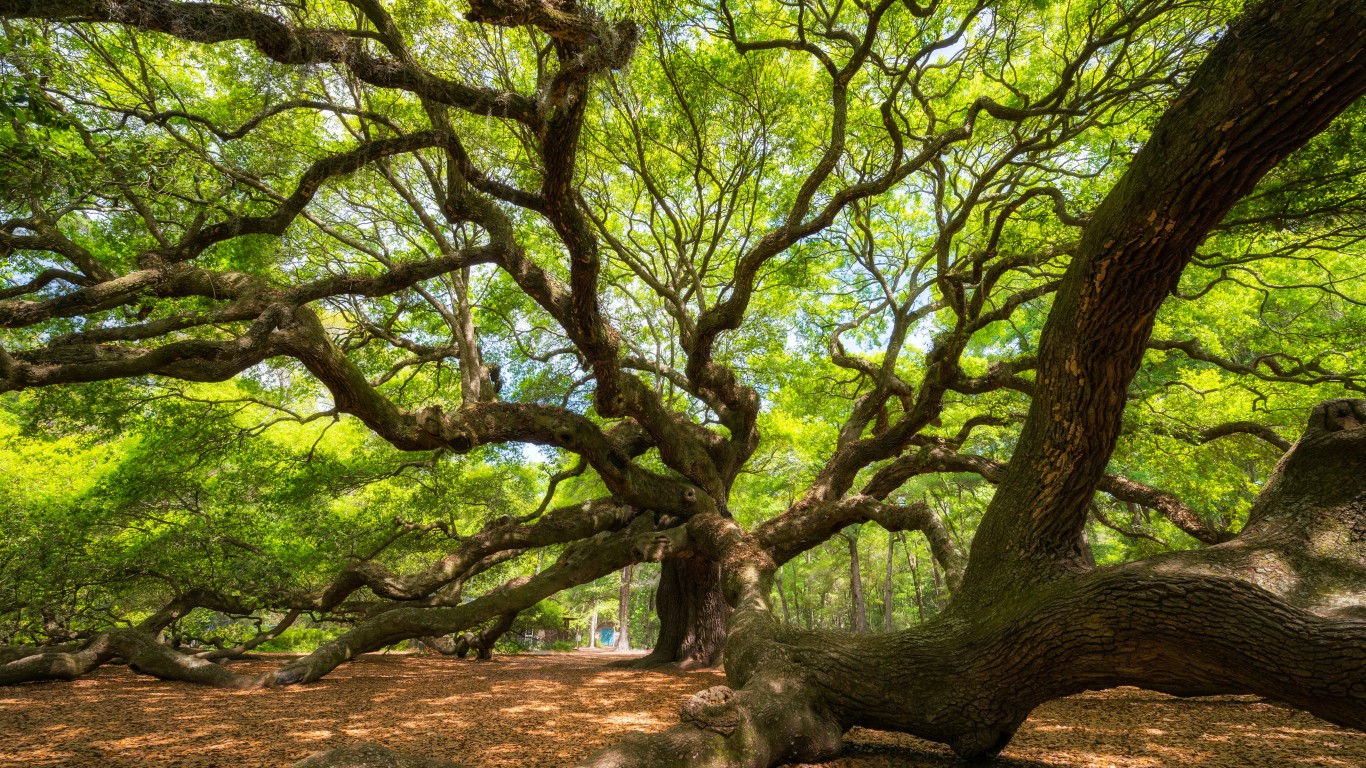
11. The Angel Oak, South Carolina
The Angel Oak Tree is 66.5 feet tall and is thought to be about 500 years old, even though some say it’s three times as old. Its shade covers some 17,200 square feet. The tree is one of the most popular attractions in the Charleston, South Carolina area.
[in-text-ad]

12. Ruby Falls, Tennessee
Located within Lookout Mountain in Chattanooga, Tennessee, this is the tallest and deepest underground waterfall in the country that is open to the public. It was discovered in 1928 by a team of excavators. One of them, Leo Lambert, named the waterfall after his wife, Ruby.
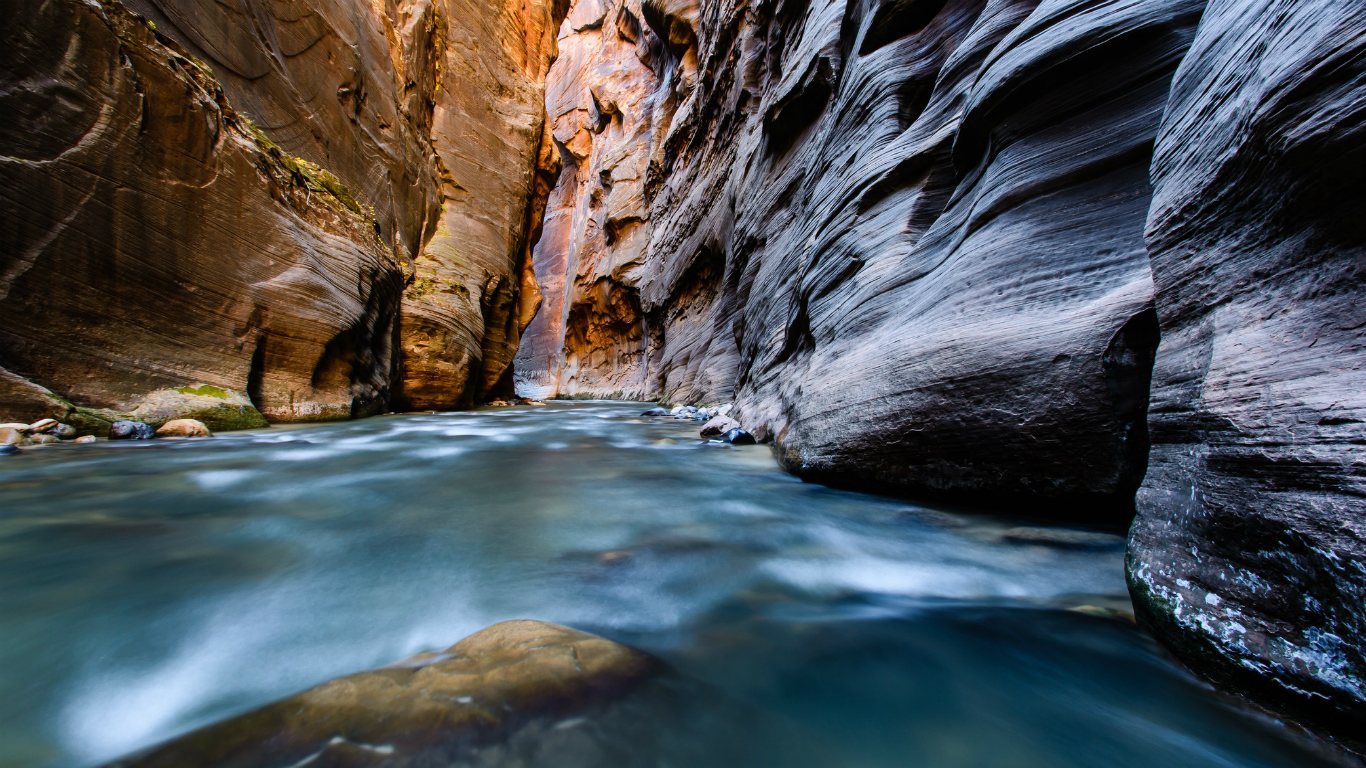
13. The Narrows, Utah
The Narrows are a very popular area, especially for hiking, in Zion National Park. As the name suggests, it’s the narrowest section of Zion Canyon. The walls are about 1,000 feet but the river is sometimes just about 30 feet wide. Be prepared whenever you go because sudden storms, which are not unusual, can cause life-threatening flash floods.

14. Apostle Islands National Lakeshore, Wisconsin
The beaches and cliffs along the 12 miles of mainland and 21 islands that make up the Apostle Islands National Lakeshore draw visitors who like to hike, sail, and paddle, especially in and around Lake Superior. You can also try diving for shipwrecks.
[in-text-ad-2]

15. Grand Prismatic Spring, Wyoming
This is by far the most photographed thermal attraction in Yellowstone National Park. It’s also the biggest in the United States and the third largest spring in the world — it’s bigger than a football field. It measures 250 by 300 feet and is 160 feet deep.
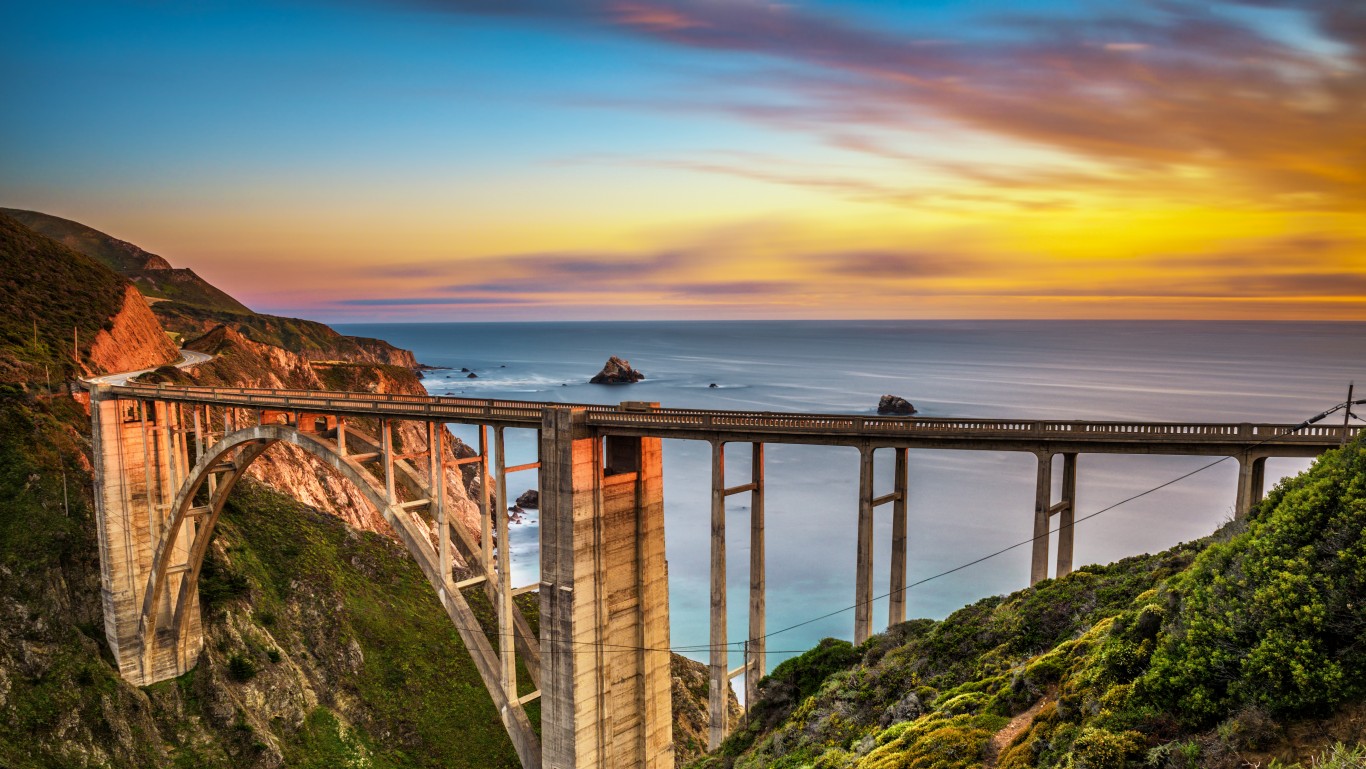
16. Big Sur, California
The 90 miles between Carmel-by-the-Sea and Hearst Castle are a very popular attraction in California. It draws many artists from around the country for inspiration. A road trip, which will surely include Highway 1 and Bixby Bridge, is a must.
[in-text-ad]

17. Route 66
Even though Route 66 as we know it from numerous movies and books has been decommissioned, it remains an American icon and much of it is still drivable. Also called the Mother Road or America’s Highway, it crosses eight states from Chicago to Los Angeles and runs more than 2,000 miles. It is on many adventurers’ bucket lists.
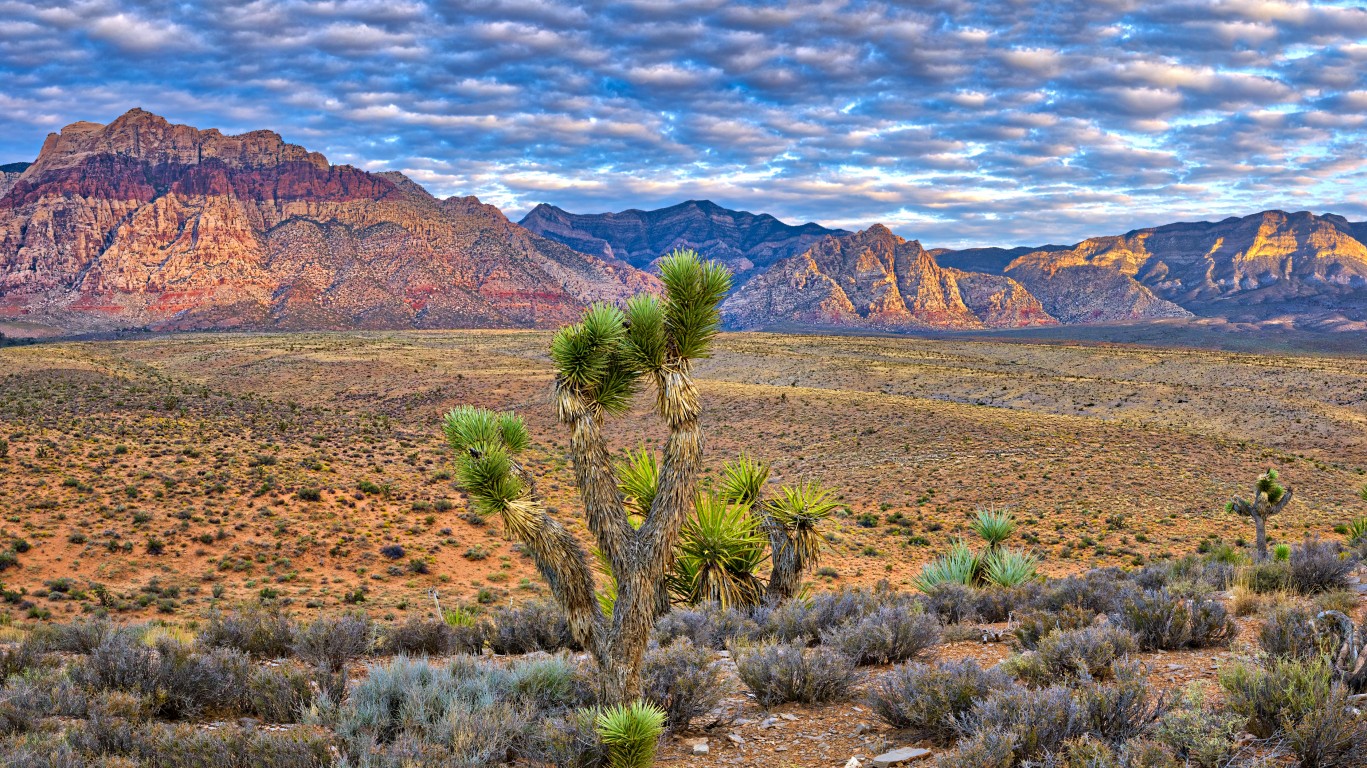
18. Red Rock Canyon, Nevada
The Red Rock Canyon National Conservation Area, which covers over 195,000 acres in the Mojave Desert, is just about 13 miles away from Las Vegas. People from all over the world visit to see its unique geologic features. They include the Aztec Sandstone, which is about 190 million years old, and dinosaur tracks.

19. New River Gorge Bridge, West Virginia
New River Gorge Bridge stands 876 feet above the river. It has been one of the most popular BASE jumping spots in the country for decades. You get only one day of the year to legally leap off the bridge — and in 2019 the day is October 19.
[in-text-ad-2]

20. Bryce Canyon Amphitheater, Utah
Bryce Canyon National Park has a deceiving name. The park is not actually a canyon. It is a series of many amphitheaters, each of which is carved at least 1,000 feet into the limestone. The most popular area of the so-called “forest of stone” is Bryce Amphitheater. Wind and water over millions of years have created cliffs, hoodoos, and castles.
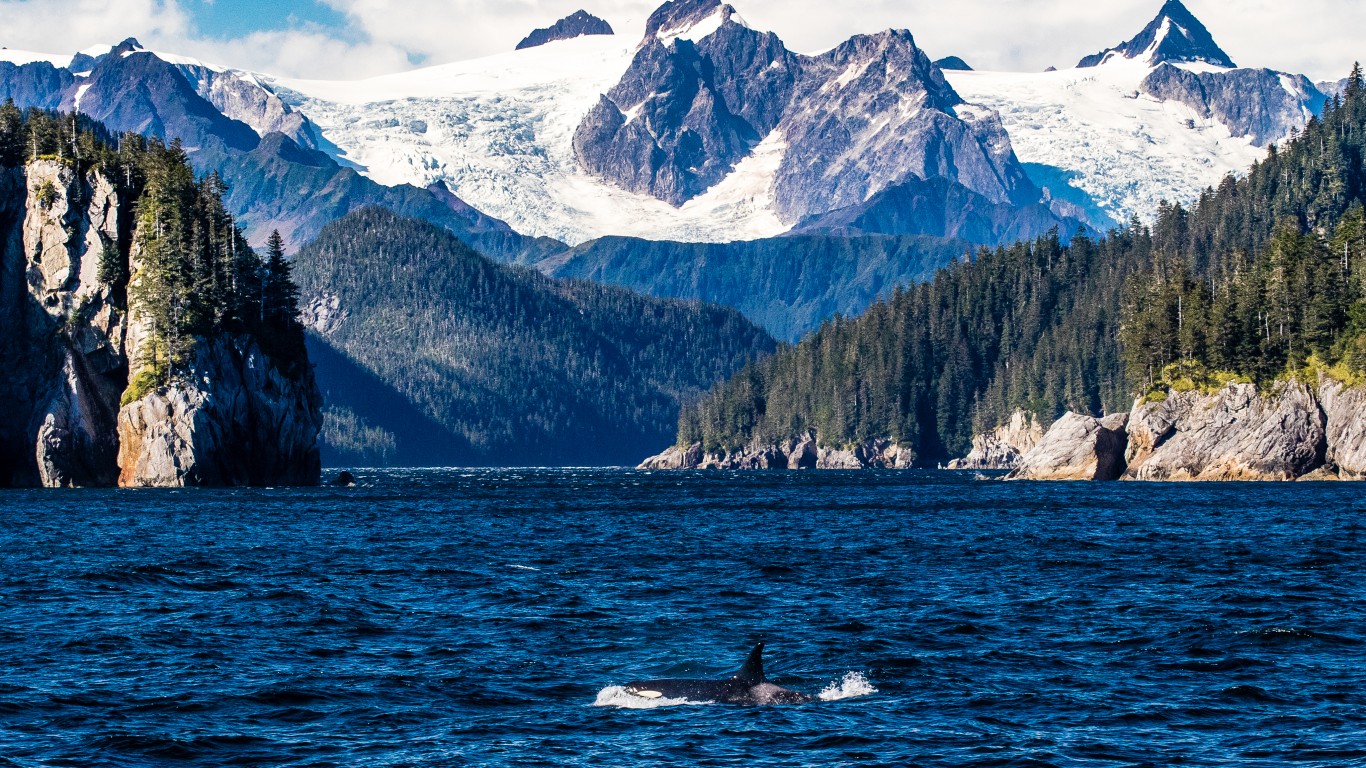
21. Kenai Fjords, Alaska
This is where you go to see remnants of the Ice Age. Located at the edge of the Kenai Peninsula, about 40 glaciers flow from the Harding Icefield, which is its most popular attraction. Your best bet to see whales, dolphins, and sea lions is a cruise leaving from Seward.
[in-text-ad]

22. Indiana Dunes, Indiana
Millions of people from all over the country make the trip to the Indiana Dunes, which are located not far from the southern tip of the famous Lake Michigan. Hiking and biking are popular as trails take you through 70 miles of dunes, marches, and prairies.

23. Badlands, South Dakota
The badlands are a trademark of the West. A 40-mile road trip along the Badlands Loop State Scenic Byway is a good way to experience the area. You’ll witness ancient rock formations, cliffs, and colorful spires. The best viewpoints include Big Badlands Overlook, Pinnacles Overlook, and Yellow Mounds Overlook.

24. Hill Country, Texas
Texas may be known, among other things, for high school football and BBQ, but Texas Hill Country is famous for bluebonnets, which are the state flower. The best time to see these beautiful native wildflowers is the first few weeks of April.
[in-text-ad-2]

25. The Grand Canyon, Arizona
The Grand Canyon is one of America’s most popular natural wonders. It is 277 miles long and 18 miles wide, and up to 6,000 feet deep, making it one of the largest and longest canyons in the world. One of the most popular ways to see it is to hike the South Rim trail, which is open year-round.

26. Maroon Bells, Colorado
Located just about 10 miles from Aspen, the Maroon Bells are among the most popular attractions in the Rockies. They are certainly among the most photographed mountain landscapes in the state. The characteristic maroon coloring is said to be a result of the weathering of hematite, a reddish-black mineral.
[in-text-ad]
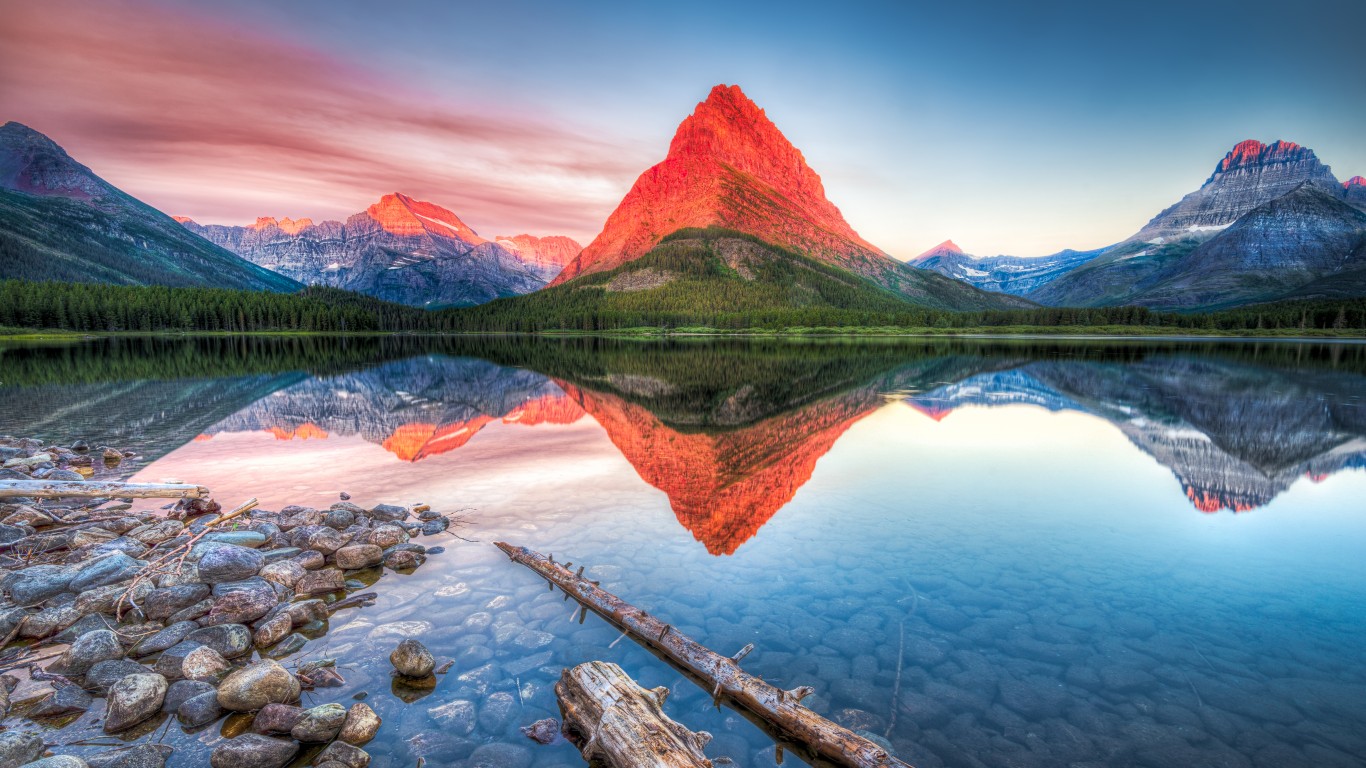
27. Swiftcurrent Lake, Montana
Surrounded by towering, snow-capped peaks, Swiftcurrent Lake is located in Glacier National Park. The lake is a very popular place for recreational activities as the water remains cool even in the summer. The Nature Trail loop hike is a good way to experience nature. It’s completely flat, so no special hiking skills are needed.
Thank you for reading! Have some feedback for us?
Contact the 24/7 Wall St. editorial team.